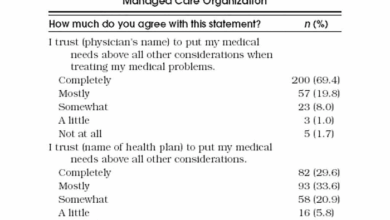
UTI common misdiagnosis essay explores the frustrating reality of misidentifying urinary tract infections. Many conditions mimic UTI symptoms, leading to delayed or incorrect treatment. This essay delves into the common misdiagnosis scenarios, the diagnostic challenges, and the impact on patient outcomes. Understanding these complexities is crucial for healthcare providers to improve diagnostic accuracy and ultimately, patient well-being.
From the subtle symptoms of a lower UTI to the more serious signs of an upper UTI, distinguishing between these and other conditions can be challenging. This essay will examine common conditions that mimic UTI symptoms, analyze the limitations of current diagnostic methods, and explore the consequences of misdiagnosis on patient health.
Introduction to Urinary Tract Infections (UTIs)
Urinary tract infections (UTIs) are common infections affecting the urinary system, a vital part of our body responsible for filtering waste and maintaining fluid balance. These infections can range from mild discomfort to serious complications, highlighting the importance of understanding their various forms and potential impacts. Early detection and appropriate treatment are crucial for preventing further complications and ensuring overall well-being.UTIs involve the invasion and multiplication of bacteria in the urinary tract, starting from the urethra and potentially progressing to the bladder, kidneys, and even the bloodstream.
The symptoms, severity, and treatment options vary significantly depending on the specific location of the infection. Understanding the nuances of different UTI types is key to appropriate diagnosis and management.
Types of Urinary Tract Infections
UTIs are broadly categorized into lower and upper UTIs based on the affected parts of the urinary system. Lower UTIs typically involve the urethra and bladder, while upper UTIs extend to the kidneys.
Symptoms of UTIs
Recognizing the symptoms of a UTI is critical for timely intervention. Symptoms vary depending on the type and severity of the infection.
- Lower UTIs often present with burning or pain during urination (dysuria), frequent urination, and a feeling of urgency. Cloudy or foul-smelling urine, and sometimes lower abdominal pain, may also occur. These symptoms are generally less severe compared to upper UTIs.
- Upper UTIs, on the other hand, frequently manifest with more pronounced symptoms. These may include fever, chills, flank pain (pain in the side of the back, often between the ribs and hips), nausea, and vomiting. The presence of these symptoms warrants immediate medical attention, as they can indicate a more serious infection that needs prompt treatment.
Prevalence and Risk Factors of UTIs
UTIs are a widespread health concern, affecting individuals of all ages and backgrounds. Certain demographics and risk factors increase the susceptibility to UTIs.
- Women are significantly more prone to UTIs than men due to anatomical differences. The shorter urethra in women makes it easier for bacteria to enter the bladder. Factors such as sexual activity, pregnancy, and hormonal changes can also contribute to a higher risk.
- Elderly individuals, especially those with underlying health conditions like diabetes or weakened immune systems, are also at higher risk. Conditions that impede normal bladder emptying, such as enlarged prostate in men, can increase susceptibility.
- Individuals with certain medical conditions, like kidney stones or anatomical abnormalities of the urinary tract, also have an increased likelihood of developing UTIs. Furthermore, improper hygiene practices and inadequate hydration can also play a role in the development of UTIs.
Comparison of UTI Symptoms
The following table summarizes the typical symptoms associated with different types of UTIs:
| Symptom | Lower UTI | Upper UTI |
|---|---|---|
| Painful urination (dysuria) | Present | May be present, but less prominent |
| Frequent urination | Present | May be present, but less frequent |
| Urgency to urinate | Present | May be present, but less intense |
| Cloudy or foul-smelling urine | Present | May be present |
| Fever | Absent or mild | Present |
| Chills | Absent or mild | Present |
| Flank pain | Absent | Present |
| Nausea and vomiting | Absent or mild | Present |
Common Misdiagnosis Scenarios
Unfortunately, urinary tract infections (UTIs) are often mistaken for other conditions, leading to delayed or inappropriate treatment. This can stem from overlapping symptoms, variations in patient presentation, and limitations in diagnostic tools. Understanding these common misdiagnosis scenarios is crucial for both patients and healthcare providers to ensure accurate and timely interventions.A crucial aspect of accurate UTI diagnosis lies in differentiating it from conditions with similar symptoms.
Many ailments can mimic UTI symptoms, including those affecting the gastrointestinal, reproductive, and musculoskeletal systems. This overlap can complicate the diagnostic process, potentially leading to misdiagnosis and delayed treatment for the true underlying condition. Factors like the patient’s medical history, current medications, and overall health status also play a significant role in the diagnostic journey.
Conditions Mimicking UTI Symptoms
Various conditions can present with symptoms similar to a UTI, making differentiation challenging. These conditions often involve inflammation or infection in neighboring structures, causing overlapping discomfort and pain. Accurate diagnosis relies on careful consideration of the patient’s complete medical history, physical examination findings, and appropriate diagnostic testing.
Potential Reasons for Misdiagnosis
Several factors contribute to the misdiagnosis of UTIs. Patient presentation can be variable, with some individuals experiencing only mild symptoms, while others exhibit severe pain and discomfort. Subjectivity in symptom reporting can also influence the diagnostic process. Furthermore, diagnostic tools, such as urine dipsticks, may not always accurately reflect the true nature of the infection or other underlying condition.
The absence of bacteria in the urine sample does not necessarily exclude the possibility of an infection, particularly in cases of non-bacterial causes.
My recent essay on common UTI misdiagnosis highlighted the importance of accurate medical assessments. While I was researching this, I came across some fascinating geopolitical developments, particularly regarding South Korea’s diplomatic relations with Syria’s new government and its North Korean allies. This insightful article south korea diplomatic relations syria new government north korea allies delves into the complexities of these relationships.
Ultimately, though, a deeper understanding of the human body and its complexities, like UTIs, is critical to effective diagnosis and treatment.
Consequences of Misdiagnosing a UTI
Misdiagnosis of a UTI can have serious consequences for patients. Delayed treatment can allow the infection to spread to other parts of the body, potentially leading to more severe complications. In women, untreated UTIs can progress to pyelonephritis, a kidney infection, which requires more intensive and potentially longer-term treatment. Moreover, misdiagnosis can lead to unnecessary and potentially harmful treatments, causing additional discomfort and potential side effects.
My recent essay on the common misdiagnosis of UTIs highlighted the importance of accurate medical assessments. Cases like the Mahmoud Khalil case, where immigration policies intersect with student activism and deportation ( mahmoud khalil case trump immigration student activism deport beliefs rubio ), remind us that systemic issues can affect individual health outcomes, and complicate the seemingly simple diagnosis.
Ultimately, these larger societal issues underscore the need for thorough and unbiased medical evaluations, even in seemingly straightforward situations like UTIs.
Table of Conditions Mimicking UTIs
| Condition | Mimicked UTI Symptom | Distinguishing Feature |
|---|---|---|
| Cystitis (bladder inflammation) | Burning sensation during urination, frequent urination | Usually responsive to antibiotics, typically affects the bladder only. |
| Urinary Calculi (Kidney Stones) | Severe flank pain, blood in urine, and frequent urination | Pain is often intermittent and sharp, localized to the flank area, and associated with stone passage. |
| Prostatitis (inflammation of the prostate gland) | Painful urination, frequent urination, and pelvic pain | Typically affects men, often presents with fever and chills, and associated with difficulty emptying the bladder. |
| Pelvic Inflammatory Disease (PID) | Lower abdominal pain, vaginal discharge, and dysuria | Typically affects women, often associated with sexually transmitted infections, and involves reproductive organs. |
| Appendicitis | Abdominal pain, fever, and nausea | Pain typically localized to the lower right quadrant of the abdomen, often associated with tenderness to palpation and guarding. |
Diagnostic Challenges in UTI Cases: Uti Common Misdiagnosis Essay
Pinpointing the cause of urinary tract infections (UTIs) isn’t always straightforward. While a typical UTI presents with clear symptoms like burning urination and frequent urges, the diagnostic journey can be complicated by overlapping symptoms with other conditions. This often leads to misdiagnosis, highlighting the importance of a thorough approach encompassing patient history, physical examination, and appropriate testing. A nuanced understanding of the diagnostic challenges is crucial for healthcare providers to ensure accurate diagnoses and effective treatment plans.
Limitations of Common Diagnostic Methods
The accuracy of diagnostic methods for UTIs varies. Urine dipstick tests, while convenient, are not always definitive. A positive dipstick result for leukocyte esterase (indicating white blood cells) or nitrites (indicating bacteria) can be present in conditions other than UTIs. Similarly, urine cultures, though the gold standard, can take time to yield results. This delay can be problematic, especially in cases requiring rapid intervention.
My recent essay on common UTI misdiagnosis highlights the frustrating lack of accurate diagnoses in healthcare. It’s a serious issue, especially considering recent news about signal chat leaks congress , which underscores the importance of thorough medical investigations. Ultimately, understanding these misdiagnoses is crucial to improving patient outcomes and ensuring better health practices.
Furthermore, the presence of certain bacteria may be undetectable by urine culture, and false negatives can occur due to insufficient sample collection or inadequate urine volume. False positives, though less frequent, can also occur. These limitations necessitate a comprehensive approach to diagnosis.
Challenges in Differentiating UTIs from Other Conditions
Many conditions share similar symptoms with UTIs. For example, prostatitis in men, pelvic inflammatory disease (PID) in women, and kidney stones can all manifest with pain, frequency, and urgency. Accurately distinguishing these conditions requires a careful evaluation of the patient’s medical history, physical examination findings, and potentially further investigations. The location of the pain, associated symptoms, and the patient’s risk factors are critical elements in differentiating between these possibilities.
Importance of Proper Patient History and Physical Examination
A detailed patient history is crucial in narrowing down the potential causes. The duration and severity of symptoms, any previous UTIs, associated symptoms like fever or chills, and any underlying medical conditions should be meticulously documented. A comprehensive physical examination can also provide valuable clues. For instance, tenderness in the lower abdomen or flank region may suggest underlying issues like PID or kidney stones.
The physical examination is a vital complement to the patient’s history and provides essential clinical information.
Diagnostic Flowchart for UTIs
| Step | Action | Potential Pitfalls |
|---|---|---|
| 1 | Gather patient history and perform physical examination. | Incomplete or inaccurate history, overlooking subtle symptoms. |
| 2 | Perform urine dipstick test. | False positives or negatives, insufficient sample volume. |
| 3 | Collect urine sample for culture. | Inadequate sample collection, delays in obtaining results. |
| 4 | Interpret urine culture results. | False positives or negatives, failure to identify atypical pathogens. |
| 5 | Consider other diagnostic tests if needed (e.g., imaging studies, blood tests). | Overuse of tests, missed opportunities to identify non-infectious causes. |
| 6 | Confirm diagnosis based on all findings. | Failure to consider the possibility of multiple conditions, misinterpretation of results. |
A flowchart, while helpful, doesn’t substitute the critical judgment of a healthcare professional. The interplay of patient history, physical examination, and diagnostic tests forms a vital process for determining the appropriate course of action.
Impact of Misdiagnosis on Patient Outcomes
Misdiagnosis of urinary tract infections (UTIs) can have severe consequences for patients, extending beyond the immediate discomfort and disrupting their overall well-being. The delay in appropriate treatment can lead to complications, impacting various aspects of a patient’s life, from physical health to mental well-being. Understanding the impact of misdiagnosis is crucial for improving patient care and preventing long-term damage.Incorrect or delayed diagnoses can result in a cascade of negative effects, often leading to prolonged suffering and potentially irreversible damage.
The psychological distress associated with unresolved symptoms, coupled with the physical consequences of untreated infections, highlights the importance of accurate and timely diagnosis. This section delves into the detrimental effects of misdiagnosis, emphasizing the need for vigilant diagnostic approaches and prompt treatment.
Negative Consequences on Patient Health
Delayed or misdiagnosed UTIs can lead to a range of complications. Untreated infections can spread beyond the urinary tract, potentially reaching the kidneys, leading to a severe condition called pyelonephritis. This serious complication can cause kidney damage, requiring hospitalization and potentially impacting kidney function for the long term. Furthermore, untreated infections can result in sepsis, a life-threatening condition where the body’s response to infection causes organ damage and potentially fatal complications.
Psychological Effects of Misdiagnosis
The uncertainty and anxiety surrounding an undiagnosed or misdiagnosed UTI can have significant psychological consequences. Patients experiencing persistent, unexplained symptoms may experience heightened stress, anxiety, and even depression. The feeling of not being taken seriously by healthcare providers or the frustration of experiencing prolonged discomfort can be deeply distressing. The uncertainty and worry associated with the potential severity of the condition can significantly impact their quality of life.
Examples of Severe Complications from Delayed/Incorrect Diagnosis
A patient presenting with recurring urinary frequency and discomfort might be initially misdiagnosed with a bladder infection. If the underlying cause, a more serious kidney infection, remains undiagnosed, the patient could face irreversible kidney damage. Another example involves a young woman with persistent pelvic pain, initially attributed to menstrual cramps. A delayed diagnosis of a complicated UTI could lead to chronic pelvic pain syndrome, a debilitating condition impacting daily activities and requiring extensive management.
These instances underscore the importance of meticulous diagnostic evaluations and prompt treatment for UTI-like symptoms.
Table Summarizing Potential Long-Term Effects
| Misdiagnosis Type | Delayed Treatment | Long-Term Effects |
|---|---|---|
| UTI initially misdiagnosed as a less serious condition (e.g., bladder infection) | Failure to address the underlying kidney infection leading to pyelonephritis. | Kidney damage, chronic kidney disease, potential need for dialysis or kidney transplant. |
| UTI symptoms attributed to other causes (e.g., menstrual cramps, IBS) | Delay in appropriate antibiotic treatment leading to sepsis or severe infection. | Sepsis, organ damage, long-term health issues, potential death. |
| Insufficient diagnostic tests leading to missed UTI diagnosis. | Continued infection spreading to other parts of the body. | Potential for chronic pain, complications in pregnancy (if applicable), and potential infertility issues. |
Strategies for Preventing Misdiagnosis

Urinary tract infections (UTIs) are a common ailment, but their diagnosis can sometimes be tricky. Misdiagnosis can lead to significant problems, ranging from delayed treatment to the development of complications. Therefore, implementing strategies to improve diagnostic accuracy is crucial for patient well-being. A multi-faceted approach involving thorough patient evaluation, precise diagnostic testing, and consideration of differential diagnoses are key elements in preventing these errors.Comprehensive patient evaluation is fundamental in accurately diagnosing UTIs.
This involves gathering a detailed medical history, noting any risk factors, and meticulously assessing symptoms. Often, seemingly unrelated symptoms can point to an underlying condition mimicking a UTI.
Comprehensive Patient Evaluation, Uti common misdiagnosis essay
A thorough history taking process is essential for accurate UTI diagnosis. This includes not only the patient’s reported symptoms (frequency, urgency, pain, etc.) but also a complete medical history, including any previous UTIs, underlying medical conditions (diabetes, kidney stones, etc.), and medications the patient is currently taking. The patient’s lifestyle factors, such as sexual activity, hygiene practices, and recent travel, can also offer crucial insights.
Observing the patient’s overall health status and vital signs, such as temperature and blood pressure, is vital. It is important to note that certain populations, such as pregnant women or those with compromised immune systems, may have different presentation patterns and require additional scrutiny.
Using Appropriate Diagnostic Tests
Proper diagnostic testing is critical for confirming or ruling out a UTI. A urinalysis, which assesses the physical and chemical properties of urine, can detect signs of infection, such as bacteria or blood. However, a negative urinalysis does not always rule out a UTI, and further investigation is often necessary. A urine culture, which identifies the specific bacteria causing the infection and its susceptibility to antibiotics, provides a definitive diagnosis.
The culture result helps guide appropriate antibiotic therapy and prevent the development of antibiotic resistance. Considering the patient’s symptoms and medical history, the decision to perform a urine culture or other diagnostic tests should be made judiciously.
Considering Differential Diagnoses
It’s crucial to consider alternative conditions that could mimic the symptoms of a UTI. Conditions such as kidney stones, pelvic inflammatory disease (PID), or prostatitis in men, can present with similar symptoms, leading to misdiagnosis if not carefully evaluated. A thorough evaluation, including physical examination, blood tests, and imaging studies, may be necessary to rule out these differential diagnoses.
The possibility of other, less common conditions, such as bladder cancer or interstitial cystitis, should also be considered.
Improving Diagnostic Accuracy in UTI Cases
A multidisciplinary approach to UTI diagnosis can significantly enhance accuracy. Collaborating with specialists, such as nephrologists or urologists, can provide additional expertise and potentially uncover underlying conditions that might be missed. Continuous education and training for healthcare providers on the latest diagnostic techniques and the recognition of atypical presentations can lead to improved diagnostic accuracy. Developing and implementing standardized protocols for UTI evaluation in different healthcare settings can also play a vital role.
Checklist for Healthcare Providers
- Obtain a detailed medical history, including previous UTIs, current medications, and risk factors.
- Conduct a thorough physical examination, paying close attention to the abdomen, pelvic area, and any relevant symptoms.
- Order a urinalysis to assess for signs of infection.
- If indicated, order a urine culture to identify the causative bacteria and its antibiotic sensitivity.
- Consider differential diagnoses, such as kidney stones, PID, or prostatitis, based on the patient’s symptoms and medical history.
- Consult with specialists when necessary, especially for complex cases or suspected underlying conditions.
- Document all findings and decisions thoroughly in the patient’s medical record.
Case Studies of Misdiagnosis
Understanding the complexities of urinary tract infections (UTIs) often involves examining cases where the initial diagnosis was incorrect. These misdiagnoses can have significant implications for patient well-being, highlighting the need for careful consideration and thorough evaluation in clinical practice. The following case studies illustrate potential pitfalls and underscore the importance of a nuanced approach to UTI diagnosis.
Hypothetical Case Study 1: A Misdiagnosed Case of Cystitis
A 28-year-old female presented with lower abdominal pain, urinary frequency, and urgency. She also reported mild fever and chills. The initial evaluation focused on symptoms characteristic of cystitis, and she was prescribed a course of antibiotics for uncomplicated urinary tract infection. However, the symptoms persisted, and the patient experienced worsening flank pain and nausea. Further investigation revealed a kidney infection (pyelonephritis) requiring intravenous antibiotics and hospitalization.
The initial diagnosis of cystitis failed to account for the progression of symptoms, potentially indicating a more severe infection or an underlying condition that warrants further investigation.
Hypothetical Case Study 2: Misdiagnosis in a Patient with Recurrent Symptoms
A 50-year-old male presented with recurrent urinary tract infections. Initial diagnoses were consistent with uncomplicated UTIs, and the patient was treated with antibiotics. The infections kept recurring despite antibiotic treatment. Further evaluation revealed a structural abnormality in the urinary tract, causing urinary stasis and creating an environment conducive to bacterial colonization. This case highlights the importance of considering underlying anatomical issues or conditions that could predispose a patient to recurrent UTIs, and the need for diagnostic procedures beyond a simple urine analysis.
Hypothetical Case Study 3: The Role of Underlying Conditions
A 65-year-old female presented with urinary frequency and dysuria. Initial evaluation suggested a typical UTI. However, the patient’s medical history included diabetes and a history of recurrent infections. Further investigation revealed a complicated urinary tract infection (UTI) linked to a diabetic-induced neurogenic bladder, impacting bladder control and potentially predisposing her to recurrent UTIs. This case emphasizes the importance of considering underlying medical conditions and their potential impact on UTI presentation and management.
Learning Points from the Case Studies
These case studies illustrate several crucial learning points regarding UTI misdiagnosis. Firstly, relying solely on symptom presentation can be misleading, particularly when dealing with recurrent or persistent infections. Secondly, underlying conditions, such as structural abnormalities or diabetes, can significantly influence UTI presentation and require thorough investigation. Finally, a comprehensive medical history and a careful evaluation of symptoms are critical for accurate diagnosis, preventing inappropriate treatment and potential complications.
Comparison of Case Studies
| Case Study | Symptoms | Initial Diagnosis | Correct Diagnosis |
|---|---|---|---|
| 1 | Lower abdominal pain, urinary frequency, urgency, mild fever, chills | Cystitis | Pyelonephritis |
| 2 | Recurrent urinary tract infections | Uncomplicated UTIs | Structural abnormality in the urinary tract |
| 3 | Urinary frequency, dysuria | Typical UTI | Complicated UTI linked to diabetic-induced neurogenic bladder |
Importance of Comprehensive Patient History

A crucial aspect of accurately diagnosing a urinary tract infection (UTI) lies in meticulously gathering a detailed patient history. This process allows healthcare providers to not only identify the presence of UTI symptoms but also to rule out other potential conditions that might mimic them. A thorough history forms the bedrock of a sound diagnostic approach, providing valuable context and insight into the patient’s overall health and potential contributing factors.A comprehensive patient history is essential in differentiating UTIs from other conditions that present with similar symptoms.
For instance, abdominal pain, frequency, and urgency can also indicate appendicitis, kidney stones, or even a gastrointestinal issue. A detailed history allows the clinician to consider these possibilities and to tailor subsequent investigations accordingly.
Eliciting Relevant Information
A well-structured patient history focuses on gathering information that helps distinguish a UTI from other potential diagnoses. This involves probing beyond the immediate symptoms and delving into the patient’s medical history, lifestyle, and recent activities.
Types of Questions to Ask
A systematic approach is crucial when questioning patients. Open-ended questions encourage detailed responses, allowing patients to describe their symptoms in their own words. Closed-ended questions, while helpful for clarifying specific points, should be used judiciously. The following are examples of questions that should be asked:
- Location and characteristics of pain: Instead of simply asking “Where does it hurt?”, probe for the specific location, nature of pain (e.g., sharp, dull, burning), and any associated symptoms like radiation or changes in pain intensity.
- Frequency and urgency of urination: Inquire about the frequency and urgency of urination, the volume of urine, and any discomfort or pain during urination.
- Recent travel, dietary changes, and medication use: Patients should be asked about any recent travel, dietary changes, or new medications they have started, as these can influence the presentation and development of symptoms.
- Medical history: A review of the patient’s past medical history, including any prior UTIs, kidney stones, or other relevant conditions, is important. It can provide context for the current presentation and influence the diagnostic process.
- Sexual history: For sexually active patients, a discussion of their sexual history, including sexual practices and partners, is crucial, especially in cases of recurrent or unusual symptoms.
- Lifestyle factors: Factors like stress, hygiene practices, and recent physical activity can be relevant and should be explored.
Structuring a Detailed Patient History
A structured approach to patient history-taking is crucial. This allows for a systematic evaluation of potential causes for the symptoms.
- Symptom onset and duration: Determine when the symptoms first appeared, how long they have lasted, and any changes in severity or frequency.
- Symptom characteristics: Describe the characteristics of the symptoms, including location, intensity, and any associated sensations (e.g., burning, urgency, pain).
- Past medical history: Collect information about prior UTIs, kidney stones, diabetes, and other conditions that might contribute to the current presentation.
- Medications: List all current medications, including over-the-counter drugs and herbal remedies, as these can influence symptoms or interactions with potential diagnoses.
- Lifestyle factors: Evaluate dietary habits, hydration levels, sexual activity, recent travel, and any potential stressors.
Example Questions for a Possible UTI
| Category | Example Questions |
|---|---|
| Symptom Onset and Duration | “When did you first notice the symptoms?” “Have the symptoms worsened or improved since their onset?” “How long have you been experiencing these symptoms?” |
| Symptom Characteristics | “Describe the pain you are experiencing.” “Is the pain localized to a specific area?” “Do you experience any burning sensation when urinating?” |
| Past Medical History | “Have you had any previous UTIs?” “Do you have any underlying medical conditions?” “Have you had any recent kidney stones?” |
| Medications | “What medications are you currently taking?” “Are you taking any over-the-counter medications or supplements?” |
| Lifestyle Factors | “What is your usual daily fluid intake?” “Have you recently traveled?” “Have you made any dietary changes recently?” |
Last Word
In conclusion, UTI common misdiagnosis essay highlights the importance of comprehensive patient evaluation and the use of appropriate diagnostic tools. Misdiagnosis can have severe consequences, ranging from delayed treatment to long-term complications. By understanding the nuances of UTI symptoms, the pitfalls in diagnosis, and the importance of a detailed patient history, healthcare providers can strive for improved diagnostic accuracy and ultimately, better patient outcomes.





